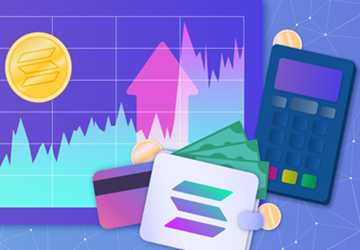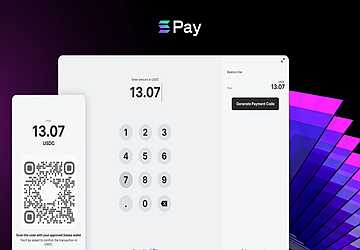By utilizing the strength of the Solana blockchain network, the online payment platform Solana Pay provides companies and customers with rapid, fee-free transactions that, according to the company, have no negative environmental impact. In addition, the network states that it can handle 65,000 transactions each second, and it offers a simple SDK for companies to incorporate the solution.
Just as traditional stores can use Solana Pay if they own a Solana wallet, developers creating DApps on Solana may use it for simple transactions. Many people equate Solana to PayPal due to its usability and claim that it can perform for cryptocurrency payments what PayPal accomplished for more conventional online payments.

Benefits of Solana Pay
Of course, cryptocurrencies like Bitcoin (BTC), Ethereum (ETH), and others claim to offer almost immediate crypto payments. Still, these networks—especially Ethereum—are expensive and are not as quick as they would claim. For instance, whereas Ethereum contains an average of thirteen transactions per second, Bitcoin offers seven on average per second. In addition, the environmental impact of Bitcoin and Ethereum is also negative. As a result, businesses and customers are drawn to Solana's network because it is quicker and less expensive.
Users of Solana Pay can make real-time payments in SOL, including real-time payments in USDC, without the assistance of a third party like a payment processor or bank. Furthermore, Solana Pay does not permit chargebacks, eliminating an expensive problem that conventional businesses frequently encounter.
Solana Pay is perfect for businesses since it provides thorough reports on every transaction, including the wallet destination, currency kind, transaction amount, and text sections for the business to characterize the transaction. Furthermore, this information is kept entirely secret from the network, allowing both the consumer and the merchant to conduct business anonymously.
Solana Pay's drawbacks
The Solana network and Solana Pay are both in their early stages of development. Businesses who migrate to Solana Pay risk losing their assets, for example, due to programming errors or network attacks. If the firm is unfamiliar with crypto, assets might be lost due to common user mistakes, as maintaining a crypto wallet isn't something that everyone can do effortlessly.
Furthermore, even while Solana outperforms several of its rivals in terms of speed, Ethereum still has a far larger user base overall. Therefore, the eventual switch to Ethereum 2.0 by Ethereum, which has many more Decentralized applications and a bigger number of users than Solana, may cause issues for Solana.

Solana Pay for businesses
Although Solana Pay can sound complicated, merchant integration is relatively straightforward. A trader must first create a Solana wallet.
Next, the business must integrate the Solana Pay code into its website and turn the accompanying link for a payment request into a QR code. Customers can now use their SOL wallet to quickly scan a code to pay for online and in-person products and services.
Solana for developers
While providing retailers a simple way to take cryptocurrency is Solana Pay's primary use case, the Solana community is free to suggest modifications and present additional use cases. According to the Solana Pay documentation, users who want to suggest improvements and adjustments are encouraged to create a Github issue.




